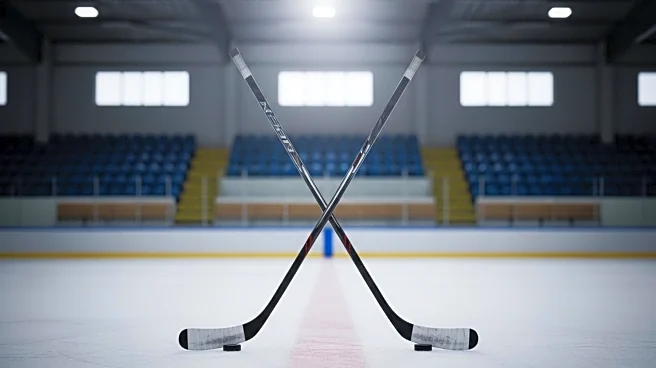What's Happening?
Several NHL players are dealing with injuries as the preseason progresses, affecting team lineups and preparations for the regular season. Ottawa Senators' Drake Batherson is out for two weeks due to an upper-body injury, while New York Islanders' Anders Lee will miss 1-2 weeks with a similar issue. Vancouver Canucks' Nils Hoglander is undergoing evaluation for a lower-body injury, and Philadelphia Flyers' Ethan Samson is expected to be sidelined for 6-8 weeks. Additionally, Seattle Kraken's Chandler Stephenson and Jared McCann are day-to-day but expected to be ready for the regular season. These injuries are causing teams to adjust their strategies and player positions as they prepare for the upcoming season.
Why It's Important?
The injuries to key players across various NHL teams could significantly impact their performance in the early stages of the regular season. Teams like the Ottawa Senators and New York Islanders may need to rely on less experienced players to fill the gaps, potentially affecting their competitive edge. The absence of seasoned players like Anders Lee and Drake Batherson could alter team dynamics and strategies, influencing game outcomes. This situation presents opportunities for other players to step up and prove their capabilities, which could lead to unexpected shifts in team standings and player roles.
What's Next?
Teams will continue to monitor the health of their injured players and make necessary adjustments to their lineups. Coaches may need to experiment with different player combinations and strategies to compensate for the absence of key players. As the regular season approaches, teams will focus on ensuring that injured players recover fully and are ready to contribute effectively. The situation also opens up opportunities for younger or less established players to gain experience and showcase their skills, potentially leading to long-term changes in team rosters.
Beyond the Headlines
The current wave of injuries highlights the physical demands and risks associated with professional hockey. It underscores the importance of player health management and the role of medical teams in ensuring athletes' well-being. The situation may prompt discussions on improving safety measures and training protocols to minimize injury risks. Additionally, the impact on team performance could influence fan engagement and expectations, as supporters adjust to changes in player availability and team dynamics.










